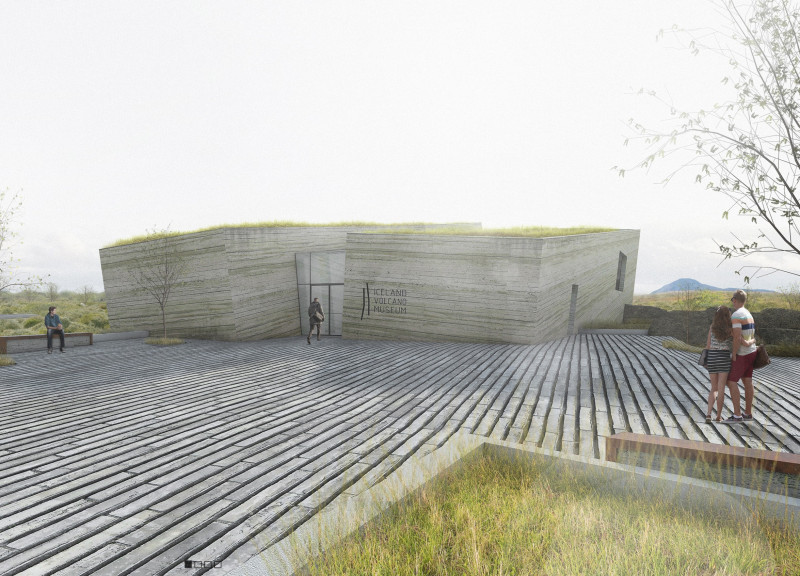5 key facts about this project
The architecture of the museum represents a harmonious blend of form and function, seamlessly integrating with the surrounding landscape. The building's exterior features an innovative use of corten steel, which develops a natural patina over time, echoing the textures and colors of volcanic rock. This material choice embodies the core concept of the project, reflecting the ever-evolving nature of geological formations. The incorporation of a green roof further emphasizes sustainability, providing insulation while promoting biodiversity and visual continuity with the environment.
Inside, the museum is designed to guide visitors through an engaging narrative about volcanology. The layout is carefully planned to facilitate movement, with spacious exhibition halls and interactive learning areas. These spaces are articulated in a manner reminiscent of geological layers, encouraging visitors to experience the depth of knowledge and the tactile nature of exhibits. Expansive glass panels throughout the museum offer stunning views of the Icelandic landscape, allowing natural light to filter in and create a dynamic atmosphere. This connection to the outside world not only enhances the overall visitor experience but also underscores the educational mission of the museum.
The exhibition design emphasizes interactivity and engagement, with curated displays that invite visitors to explore volcanic activity through various mediums. The museum hosts dynamic installations that accommodate hands-on learning and visual storytelling, making complex scientific concepts accessible and relatable. By bridging the gap between scientific inquiry and public education, the design fosters a deeper appreciation for the geological forces at work in Iceland.
Unique design approaches can be seen throughout the project. The use of local materials not only supports sustainability but also reinforces the museum’s connection to its geographical context. Additionally, the design reflects considerations for environmental impact, with energy-efficient systems and sustainable practices woven into every aspect of the architecture. The overall aesthetic is subtle, complementing the dramatic Icelandic landscape without overshadowing it, allowing the natural beauty to remain the focal point.
In summary, the Iceland Volcano Museum stands as a noteworthy architectural project that combines educational purpose with responsive design. Its thoughtful integration of materials, sustainability principles, and interactive elements creates a unique experience for visitors. For those interested in delving deeper into the architectural aspects of this project, reviewing the architectural plans, architectural sections, and architectural designs will provide further insights into the innovative ideas that shaped this remarkable museum. Exploring the details of this project offers a valuable perspective on how architecture can facilitate learning and appreciation of the natural world.


























